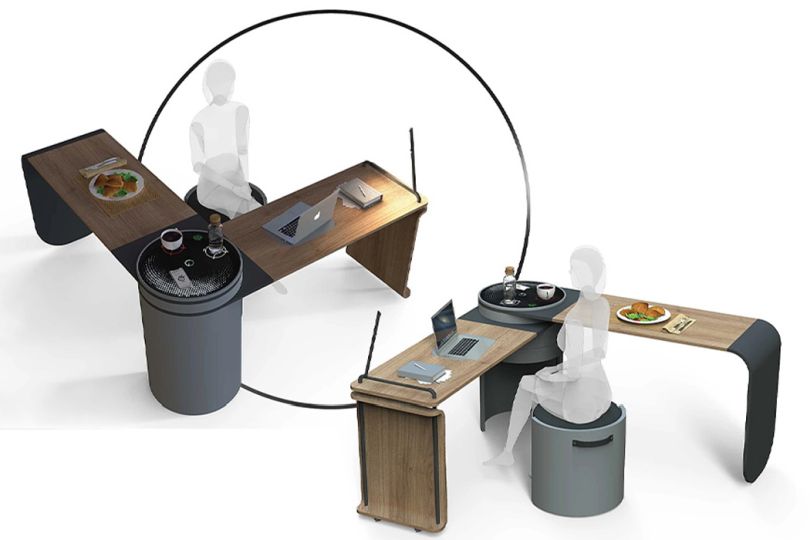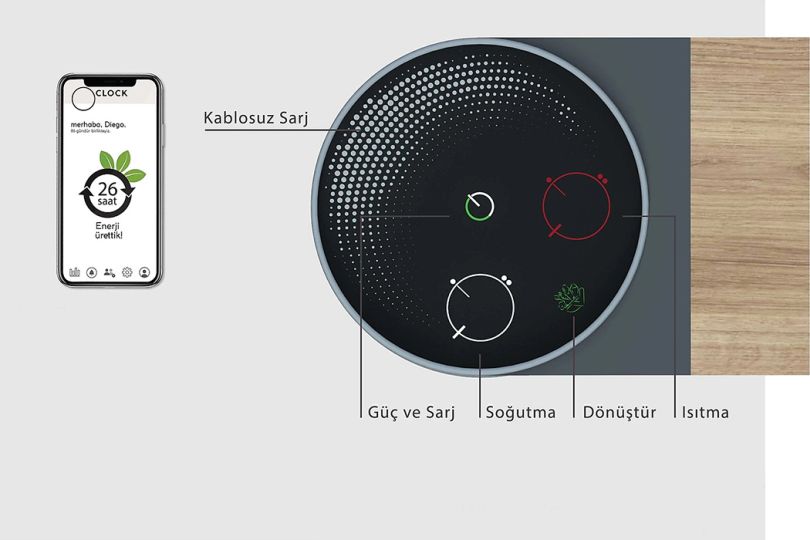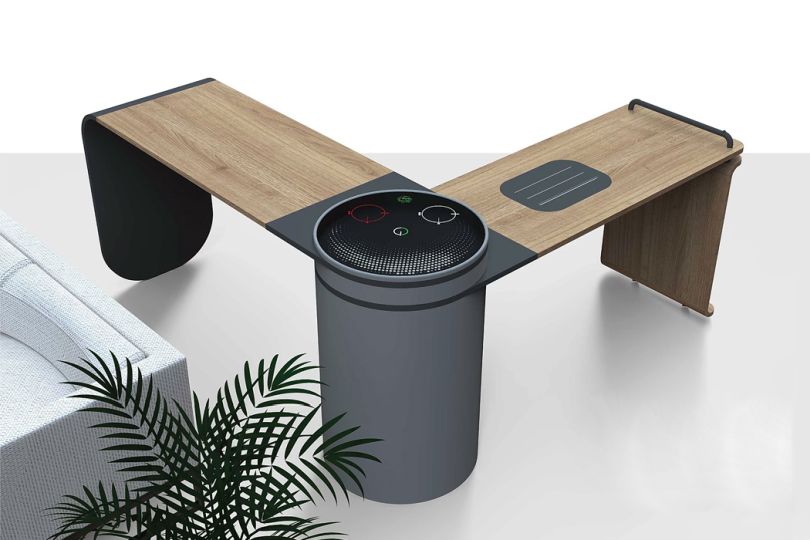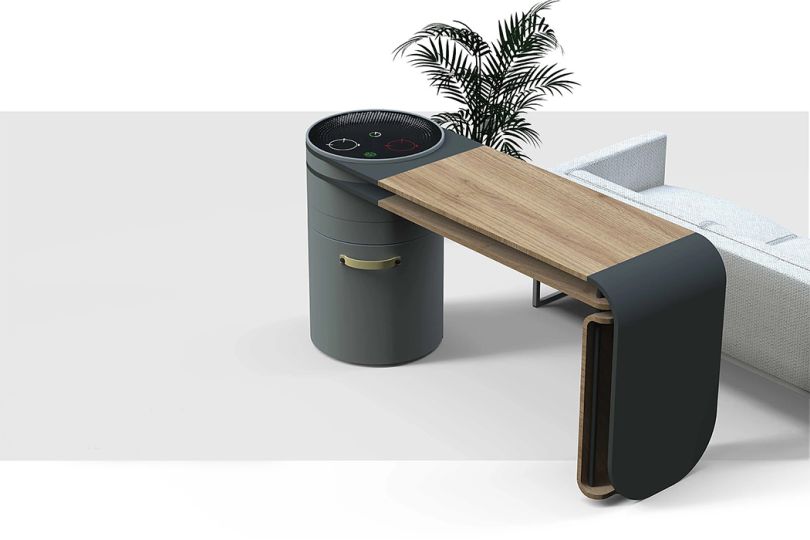Clock Desk Uses Food Waste to Power Itself And Your Gadgets
Yeg Design Studio has created an innovative Clock Desk for professionals to enhance their productivity at office or home while harnessing sustainable energy. This is basically a futuristic conceptual design that opens and closes as per the requirements of the user. Meanwhile, it even saves space when not in use – due to its nesting aesthetics.
However, the highlight of this functional desk converts food waste into energy for powering itself wirelessly. You may even charge your gadgets through sustainable energy.
This hybrid workstation has been designed in a compact form to fit the increasing trend of small living spaces. The designer aimed to create a piece of practical furniture that effortlessly blends into regular workdays without disrupting one’s eating habits during office hours.

During the quarantine, the designs of furniture pieces have evolved to help professionals comfortably work all day long while maintaining a healthy lifestyle. However, the idea of this functional furniture is quite surprising – as it seamlessly blends with your flexible work and lifestyle.
Also Read: AiT Smart One Desk Tells Users when Their Room Needs Ventilation
It’s amazing how this innovative product combines practicality with technology to manage waste while encouraging people to shift renewable energy sources. When not in use, just slide the parts of the desk back and close to form a slim bench. In the closed state, you may only see the energy levels and power icon in the furniture. On tapping the power icon, the panel lights up for better vision.

This smart furniture also boasts specific touch-controlled cooling and heating areas. For more convenience, you may sync your smartphone with this desk to get all updates and statistics regarding this high-tech table.
The futuristic Clock Desk gives us a vague glimpse of how our future home offices will look like. Meanwhile, the space-saving furniture pieces are also being designed with multiple attributes and sustainability concepts to save resources.




Via: Techeblog
